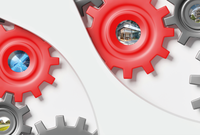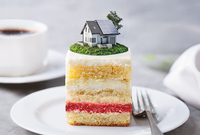Affordable & Liveable Property Guide 2nd Half 2019 - Hobart
A key finding in this report was that in order to identify affordable and liveable areas, suburbs with declining annual median house or unit price growth had to be considered. This was the same methodology applied in the 1st Half 2019¥ report. Therefore, instead of showcasing only suburbs with price growth (which was the trend in 2nd Half 2018µ report), minimising the decline in capital growth became an objective. This is good news for first home buyers because chosen affordable and liveable suburbs are now even more affordable.

Affordable Suburbs
A key finding in this report was that in order to identify affordable and liveable areas, suburbs with declining annual median house or unit price growth had to be considered. This was the same methodology applied in the 1st Half 2019¥ report. Therefore, instead of showcasing only suburbs with price growth (which was the trend in 2nd Half 2018µ report), minimising the decline in capital growth became an objective. This is good news for first home buyers because chosen affordable and liveable suburbs are now even more affordable.
Median property prices in Hobart increased by 1.4% for houses to $529,500, and by 1.7% for units to $399,750 from 2018 to 20191. Sales transactions declined during the same period, by
-31.8% for houses and -32.3% for units, which is reflective of slower market conditions. By comparison, from 2017 to 2018 the median house price increased by 10.8%, and the median unit price softened by -7.4%, while sales transactions fell -10.8% for houses and -9.4% for units. Although the Hobart median house price continues to grow, it is at a slower pace than the previous year, which presents greater affordability to first home buyers. Table 1 highlights top suburbs in Hobart based on price growth and total estimated value of projects commencing in 2nd Half 20192.

In the 12 months to Q2 2019, the proportion of income to meet home loan repayments increased by 1.6% in Tasmania (TAS)3. At the same time, the total number of first home buyers entering the market softened by -6.1%. First home buyer confidence is still in recovery in Hobart, with many being priced out of the market by interstate investors. New Federal Government incentives and the latest Reserve Bank of Australia’s cash rate cuts should lift first home buyer confidence for the rest of 2019 and into 2020.
Table
2 provides the percentage of suburbs in Hobart that are available for house
buyers.

Liveable Suburbs
Hobart showed some signs of moving toward being a more affordable property market. The price bracket of less than $350,000 remained nearly unchanged from the 1st Half 2019¥ report, moving from 10.2% to 10.1% in this report. The most expensive price bracket ($800,000+), saw the largest change, declining from 10.2% in the 1st Half 2019¥ report to 5.8%, almost shrinking in half. This consequently bolstered the mid-range price bracket of $650,000-$800,000, which grew from 22.4% in the 1st Half 2019¥ report to 25.0%. This presents an opportunity for existing owners to upgrade, while the lower end of the market remains largely unchanged. This is good news for all types of buyers, whether entering the market, upgrading, or investing.
Highly affordable suburbs (those with a maximum property sale price of the state average home loan3, plus a 120% deposit as per the 1st Half 2019¥ report), do exist. In the 2nd half of 2019 there were 26 suburbs within this price range, which is a slight improvement on the 23 suburbs previously identified in the 1st Half 2019¥ report.
Despite this improvement, many of these suburbs fail to meet liveability criteria. Premiums of 145% for houses and 70% for units needed to be added to the TAS state average home loan3 in order to satisfy the liveability criteria. These premiums are above those seen in the 1st Half 2019¥ report (previously 120% for houses and 60% for units), revealing that there has been a real increase in the cost of liveability. The premiums are also above the level required to reach Hobart’s median price. Thus, the slower median price growth from 2018 to 20191 has not resulted in improved access to liveable suburbs.
Aside from Lindisfarne, affordable and liveable suburbs featured in previous editions of the Affordable and Liveable Property Guides have either failed to meet liveability criteria or have become unaffordable due to median price growth. This highlights the need to improve Hobart’s liveability.
Considering all methodology criteria (property trends, investment, affordability, development, and liveability), Tables 3 and 4 identify key suburbs that property watchers should be on the lookout for.


During Q2 2019, the Hobart rental market recorded a median rental price of $440 per week for houses4 and $360 per week for units4, representing median house rental growth of 2.3% and a softening in the median unit rental price of -5.3%. These median rental price levels were achieved alongside an incredibly tight 0.5% vacancy rate, which tightened in the 12 months to June 2019. Average yields of 4.3% (houses) and 6.6% (units) are reflective of the tight vacancy levels in the Hobart Metro area. In fact, both markets recorded a slight upward trend in rental yields in the 12 months to June 2019 due to high rental demand during the period. The lack of additional supply within Hobart’s property market should keep vacancy rates low, which is good news for investors.
The 2nd half of 2019 is set for approximately $451.1M2 worth of development, with a major focus on commercial activity. A limited residential supply pipeline is a cause for concern, as housing affordability in the area provides developers with a great opportunity. A key commercial project for the period is the $100.0M Hobart International Airport Stage 1 Upgrade, which will create a terminal twice the size of the existing one. Such a project will help create great employment and tourism opportunities for Hobart.
Methodology
This report analyses all suburbs in the Greater Hobart area, within a 10km radius of the Hobart CBD. The following criteria were considered:
- Property trends criteria – all suburbs have a minimum of 10 transactions for statistical reliability purposes. Based on market conditions, suburbs have either positive, or as close as possible to neutral price growth, between 2018 to 20191.
- Investment criteria – as of June 2019, all suburbs considered will have an on-par or higher rental yield than Hobart Metro, and an on-par or lower vacancy rate.
- Affordability criteria – identified suburbs have a median price below a set threshold. This was determined by adding percentage premiums to the TAS average home loan, which was $276,5583 as of Q2 2019. Premiums of 145% for houses and 70% for units were added, which were above those required to reach Hobart Metro’s median prices (91% for houses and 45% for units). This places the suburbs above Hobart’s median prices. Buyers in Hobart need to sacrifice on affordability to ensure liveability and/or investment potential.
- Development criteria – all suburbs identified within this report have a high total estimated value of future development for the 2nd half of 20192, as well as a higher proportion of commercial and infrastructure projects. This ensures suburbs chosen show signs of sustainable economic growth, which in turn has a positive effect on the property market.
- Liveability criteria – this included ensuring all suburbs assessed have low crime rates, availability of amenities within a 5km radius (i.e. schools, green spaces, public transport, shopping centres and health care facilities), and an unemployment rate on-par or lower in comparison to the state average (as determined by the Department of Jobs and Small Business, March Quarter 2019 release).






